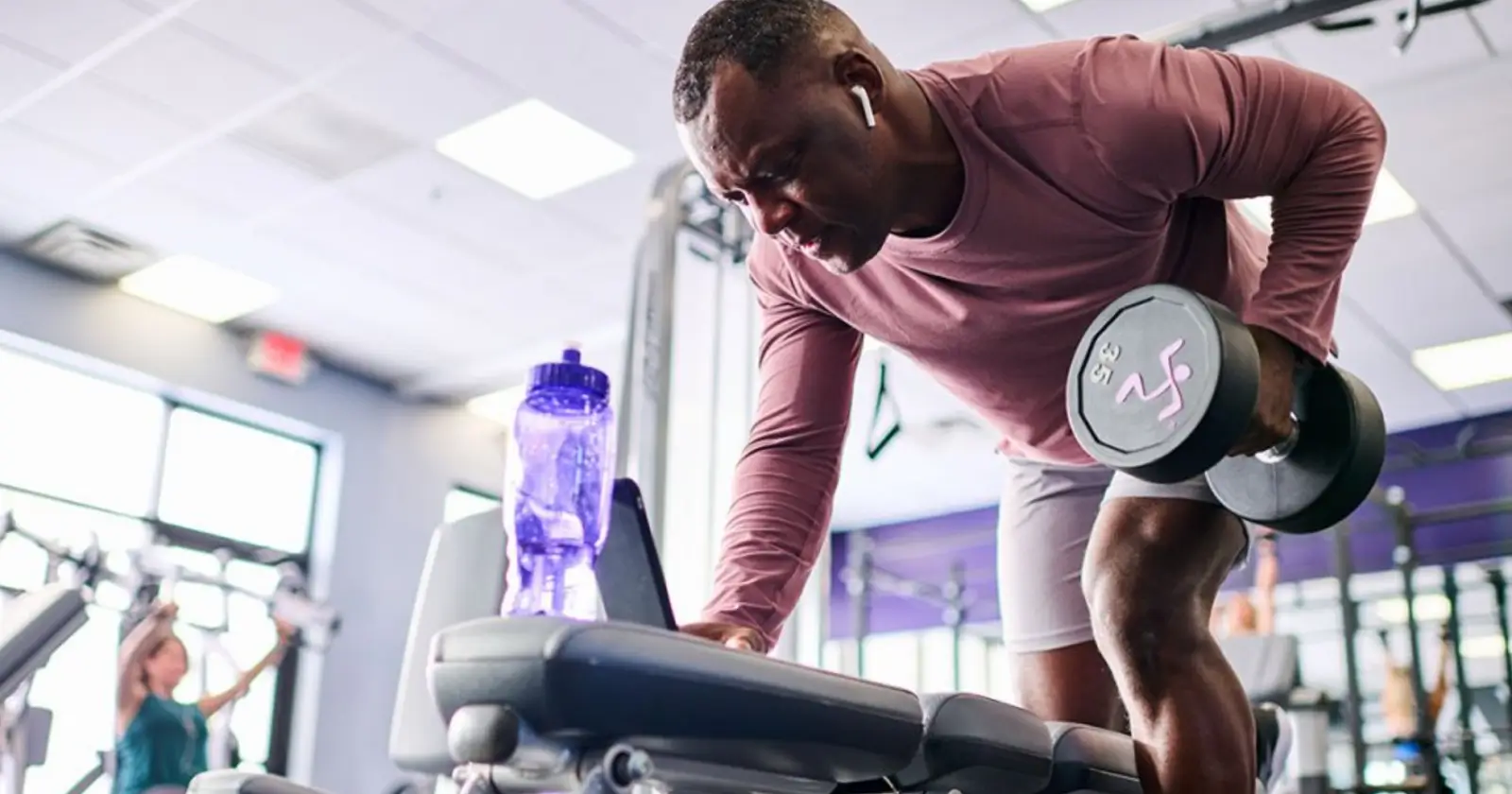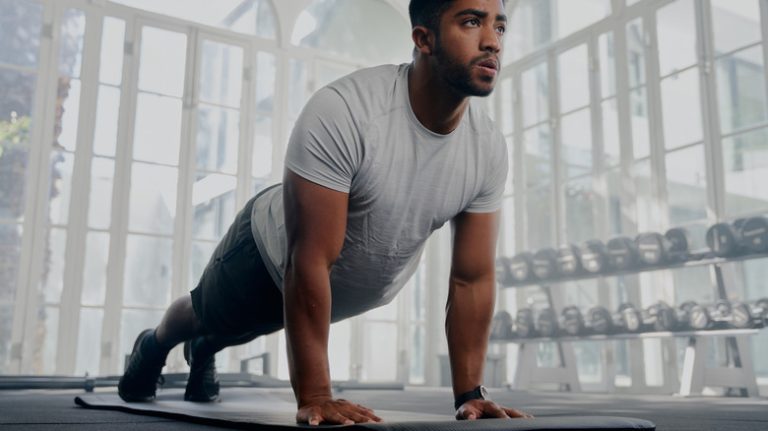Typically, workout programs divide exercises among various muscle groups and incorporate rest periods. For example, the American College of Sports Medicine suggests targeting each major muscle group 2-3 times weekly. Each session should include 8 to 10 exercises, with 2-3 sets per exercise and 8-12 repetitions per set.
These standard guidelines from the American College of Sports Medicine benefit many fitness enthusiasts, especially beginners. However, if daily arm workouts are not yielding desired results, consider adjusting your approach. Vary the number of workout days, as well as the sets and reps. While daily training can be intense, it may accelerate muscle growth and provide consistent exercise benefits. Frequent workouts can enhance both mental and physical health.
But what are the effects of concentrating on a single body part daily? Specifically, how does daily arm training impact your body? Here’s what happens.
You’ll get bigger arm muscles
Tracking gym progress can be challenging, but for those aiming to grow muscles, training volume is crucial. A study in Medicine and Science in Sports and Exercise highlights training volume as a key indicator of muscle growth. Calculate it by multiplying sets, reps, and weight. For example, using 10-pound dumbbells for 3 sets of 10 reps results in a training volume of 300 pounds.
Daily arm exercises rapidly increase training volume. You can boost volume by adding an extra set. With bicep curls, performing 4 sets instead of 3 raises the volume to 400 pounds. Adding an extra workout day doubles this volume. Increased workout volume accelerates muscle growth and is especially beneficial if progress stalls.
You’ll get stronger arms
If arm strength is your priority, daily training can still be advantageous.
While boosting muscle size, increased training volume also enhances strength. A study in Physiological Reports found that while increasing training volume aids muscle and strength growth, it’s not the optimal method for strength enhancement. Using heavier weights is more effective for building strength than merely increasing workout volume.
Focus on strength in each workout. Your volume naturally rises with more frequent workouts, but you can adjust by decreasing sets/reps and slightly increasing weights to maintain challenge. Even without these changes, as your muscles grow, your strength will improve.
You’ll have a stronger grip
Growing forearm muscles complements arm muscle growth, and daily arm training enhances grip strength. A stronger grip aids in arm exercises, and translates to other exercises like deadlifts or pull-ups, allowing you to handle heavier weights.
While you can target large grip muscles in the forearm, simply working arm muscles can improve grip as a bonus. A study in Isokinetics and Exercise Science confirmed that general upper-body programs enhance grip strength. Thus, daily arm exercises can improve grip and forearm muscle size.
You’ll get better at sports
Athletes can enhance performance through consistent arm training. Stronger, muscular arms benefit sports needing upper-body strength. Even tennis players, not typically associated with strong arms, gain from daily arm workouts. A study in the Budapest International Research and Critics in Linguistics and Education Journal found that players with stronger grips were more accurate in serving.
Not all athletes benefit from arm strengthening. Soccer players, for instance, rely on leg strength. Note that daily sports and weightlifting may lead to overuse injuries like tendinitis. If experiencing shoulder, elbow, or wrist pain, this might be the cause. Gradually reintegrate weight training or sports to assess their impact on your body.
You’ll burn more calories
Every workout burns calories. Though arm workouts may seem less intensive than running or lower-body exercises, daily sessions can still make a difference.
A study in the Journal of Strength and Conditioning Research found that weightlifting burns between 70 and 289 calories per session, depending on factors like age, weight, gender, and workout intensity.
The study also notes post-exercise calorie burn. Post-exercise oxygen consumption, which measures oxygen use after exercise compared to before, indicates calorie burn. More oxygen use means more energy burn. Additionally, weightlifting can boost metabolism, leading to increased long-term calorie burn.
You’ll get stress relief
Weightlifting can seem stressful, yet it’s a positive form of stress, preparing your body for work. However, constant stress is detrimental. Daily arm workouts can help counteract stress.
A paper in Frontiers in Psychology explored weightlifting’s impact on stress. Subjects performed exercises at varying intensities. The study found that low-to-moderate intensity weight training was most effective for reducing anxiety. Daily workouts needn’t be intense; low- to moderate-intensity sessions suffice due to exercise frequency. Stress-relief benefits from weightlifting were observed across diverse groups, suggesting it’s broadly beneficial.
Your risk for cardiovascular disease will go down
Various factors affect cardiovascular disease risk. Some, like age and family history, are beyond control, while exercise is manageable. The Centers for Disease Control and Prevention (CDC) recommend 150 minutes of moderate-intensity aerobic exercise weekly to lower heart disease risk. Aerobic activities include running, cycling, swimming, and walking.
While aerobic exercise is heart-healthy, resistance training also reduces heart disease risk. A study in the Journal of Science and Medicine in Sports demonstrated that women who lifted weights reduced their cardiovascular disease risk without aerobic exercise. Daily 30-minute arm workouts provide 210 minutes of weekly activity, beneficial for those concerned about cardiovascular disease.
You’ll reduce your risk of developing type 2 diabetes
Diabetics require strategies to control blood sugar. While medication is effective, alternative health measures are valuable. The CDC emphasizes regular physical activity for diabetics, noting benefits even below the recommended 150 minutes weekly. More exercise yields greater benefits.
Resistance training is as effective as aerobic exercise for diabetes risk reduction. A study in Sports Medicine found regular resistance training reduced type 2 diabetes risk comparably to dietary changes. Though a healthy diet is essential, this study underscores resistance training’s power in preventing type 2 diabetes. Note that researchers focused on diabetes risk reduction, not effects on diabetics.
You’ll have a reduced risk for injury
Weightlifting strengthens muscles, bones, tendons, and ligaments, enhancing resilience. Daily weightlifting bolsters arm resilience.
Weightlifting fortifies bones, reducing injury risk and osteoporosis likelihood (per the American College of Sports Medicine’s Health and Fitness Journal). Resistance training surpasses impact exercises like jumping and running.
Tendons connect muscles to bones, while ligaments connect bones. Weightlifting thickens and strengthens tendons and ligaments, lowering injury risk. Growth is proportional to muscle gain, so focus on muscle-building ensures tendon and ligament development.
You’ll burn body fat
Weightlifting burns calories, aiding body fat reduction. Fat stores energy, releasing it when needed. Regular exercise, like daily arm workouts, burns calories and boosts daily energy expenditure. To lose fat, burn more calories than consumed, known as energy balance (via the European Food Information Council).
Aerobic activities like running, cycling, and swimming typically aid fat loss, while weight training is associated with muscle and strength gains. However, a study in Sports Medicine showed that weight training also reduces body fat. Thus, consistent arm exercises can help burn fat across the body, not just in the arms. Researchers also noted visceral fat reduction, the fat around organs.
You’ll decrease your LDL cholesterol
Low-density lipoproteins transport cholesterol from the liver into the bloodstream. LDL cholesterol, or cholesterol-bound low-density lipoproteins, increases heart disease risk by clogging arteries and restricting blood flow, according to the Cleveland Clinic.
Daily arm exercises can lower high LDL cholesterol risk, reducing heart disease and stroke chances. A study in Diabetology and Metabolic Syndrome indicated that regular resistance exercise reduces LDL cholesterol levels. Consistency is key, and daily arm exercises support this. Those with high or borderline high LDL cholesterol should consider daily arm workouts.
Your HDL cholesterol will increase
While LDL cholesterol is harmful, HDL cholesterol is beneficial and can lower LDL levels. HDL cholesterol removes free-floating cholesterol from the bloodstream, returning it to the liver for expulsion.
HDL stands for high-density lipoprotein, which binds with cholesterol to form HDL cholesterol. If HDL levels are low, doctors may suggest exercise to boost them.
Daily arm workouts can elevate HDL cholesterol and reduce LDL levels. A study in Diabetology and Metabolic Syndrome found that vigorous weight training raises HDL cholesterol levels for 24 hours post-session. Daily workouts ensure sustained HDL elevation, though this wasn’t specifically studied. Raising HDL and lowering LDL cholesterol reduces heart disease risk (via WebMD).
You’ll improve your push-ups
Arm exercises target two main muscles: biceps and triceps. Biceps run from shoulder to elbow at the arm’s front, while triceps run down the back. Triceps extend the elbow, straightening it when bent. Triceps pushdowns and extensions are popular exercises for this muscle group.
Other movements, like push-ups and bench presses, also engage the triceps. A study in Shoulder and Elbow investigated muscle involvement in push-up variations. They found the chest muscle was the primary contributor, with triceps second in importance in four of the six exercises tested. By training triceps daily, they become stronger, enhancing push-up performance.
Your chin-ups will improve
Daily arm workouts can include various biceps curl variations for variety. Biceps bend the elbow, in contrast to triceps (which extend it). Stronger biceps allow for heavier curls and improve other exercises. Triceps are used in pushing motions like push-ups, while biceps are used in pulling motions. Rows, pulldowns, and chin-ups are examples of pulling motions.
Daily biceps training strengthens them, improving performance in exercises involving biceps, like pull-ups. A study in the Journal of Strength and Conditioning Research found the biceps are heavily engaged during pull-ups. At the movement’s start, biceps aren’t very active, but they become more engaged towards the top, aiding chin clearance. Researchers observed biceps activation between 78% and 96% of maximum potential.




